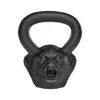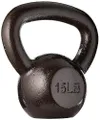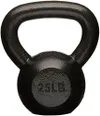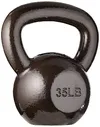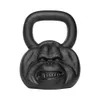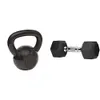
I won’t lie; I get slightly rattled when a new TikTok fat loss trend takes off. Not just because I’ve become even grumpier about fads since I hit my thirties, but also because many fitness trends aren’t rooted in reality or research. Which brings me to the latest craze — the 30/30/30 rule. Although it’s grounded in some science, the latest fat loss method isn’t exactly what it’s cracked up to be.
The 30/30/30 rule was first popularized by Tim Ferriss and then Gary Brecka. Ferriss wrote about it in his book, “The 4-Hour Body,” while Brecka took it to social media after a TEDx Talk on the topic. And so, the 30/30/30 method gained significant traction.
The rule states you should consume 30 grams of protein within 30 minutes of waking and perform 30 minutes of steady-state cardio (SSC) like walking. Not exactly controversial, but another “rule” overpromising on fat loss nonetheless.
I’m not a nutritionist, but as a trainer, I try to break down diet fads with clients. When this method came into play, I wanted to deep-dive into it. Here’s everything you need to know about the 30/30/30 method, and whether or not it could help you lose weight and burn fat.
What is Tim Ferriss' 30/30/30 rule?
As mentioned, the method involves consuming 30 grams of protein within 30 minutes of waking. The food you choose is entirely up to you, but it should help you feel satiated (which is common with a high-protein diet) and contain fiber. A meal of spinach, black beans, eggs and cottage cheese would count, for example. According to Ferriss, this should help you consume fewer calories by up to 30% across the day.
Now enter Brecka, a biologist with a huge online following who promotes 30 minutes of gentle activity alongside your protein intake shortly after waking. A clip of his TEDx Talk was shared on TikTok and has since been viewed millions of times. And there you have it: 30/30/30 and the key to fat loss — apparently.
Personal trainer and self-confessed “research nerd” Ben Carpenter, best-selling author of the book “Fat Loss Habits,” has since shared his opinions on the 30/30/30 rule, and why he doesn’t buy it.
Sign up to get the BEST of Tom's Guide direct to your inbox.
Get instant access to breaking news, the hottest reviews, great deals and helpful tips.
I’ve been following Carpenter for years; he’s known for dissecting the latest research, scouring the science, breaking it down and making it digestible for his followers.
In a video (which I'm now obsessed with), Ben and his wife, fellow coach Sohee Carpenter, agree that while protein is great and 30 grams is a “solid guideline” to aim for, consuming within 30 minutes of waking isn’t necessary.
And only steady-state cardio? Also unnecessary. After all, why would 30 minutes of the same exercise type completed first thing in the morning be the perfect formula for everyone?
“Here’s the thing with magic number formulas,” Carpenter says. “They are catchy and easy to market, but they are rarely scientific.”
We already know that eating a high-protein diet alongside regular exercise is proven to support healthy and sustainable fat loss. But those sexy-looking numbers are pretty much made-up. And although the approach admittedly promotes a sustainable method for fat loss, the outcome won’t ever be the same (or guaranteed) for everyone.
In other words, there's no such thing as a unicorn.
What is the 30/30/30 rule for weight loss: The science

Of the three macronutrients (carbs, fats and protein), carbs serve as your body’s primary source of fuel for energy during exercise. Protein serves as your muscle recovery and building tool; adequate protein intake is associated with growing and maintaining muscle mass and keeping you feeling full, and it could even help you sleep better.
Your body breaks down protein into amino acids to be used by the body, but how much protein you need to build muscle depends on you, your lifestyle and goals. Coupled with a consistent exercise routine, you can support sustainable fat loss using a high-protein diet, plenty of movement throughout the day and looking at the calories you consume daily.
At Tom's Guide, we've previously consulted nutritional therapist Kerry Beeson (BSc) for protein advice. She explains that “protein slows digestion and the release of glucose into the bloodstream” when consumed alongside carbs.
This can help reduce sharp blood sugar spikes and crashes, and research even suggests an increase in protein could help improve blood glucose regulation and stabilization. We know insulin resistance can inhibit weight loss and contribute to stubborn fat, so a high-protein diet could promote faster weight loss by helping to balance your blood sugars.
Despite the focus on exercise, your diet is also largely responsible for overall body composition — your fat-to-muscle ratio. Even if you spend months building muscle, your body fat percentage is determined by factors like lifestyle (sleep, diet, exercise), metabolism and genetics, and will subsequently help determine muscle definition.
“Here’s the thing with magic number formulas,” Carpenter says. “They are catchy and easy to market, but they're rarely scientific.”
However, let's discuss timing.
There’s little evidence suggesting the best time to consume protein is within 30 minutes of waking for fat loss. For some, it could even cause digestion issues. Sure, cramming 30 grams of protein into your morning is hardly a bad way to start the day — it could help reduce calorie consumption later by keeping you fuller — but overall protein intake is the most important number, preferably spread across the day, not how quickly you consume it after waking.
Fasting isn’t for everyone, so if you like to eat straightaway, go ahead, just don't clock watch while you do it.
I recommend protein with every meal and consuming roughly 1 to 1.5 grams per kilo of body weight daily, or up to 2 grams if trying to build muscle. An online protein calculator can help you estimate your recommended protein intake if you're unsure.
30/30/30 rule: Is eating in the morning better for fat loss?

Front-loading your day with protein could keep you full and promote healthier choices throughout the day while balancing your blood sugar and helping you to hit your daily protein target.
But again, you don’t need to cram your protein into a 30-minute morning window. Some people prefer eating before exercising, while others may wait until they’ve finished a workout to consume food, as it makes them feel unwell.
When deciding the best time to eat for your workout, there are benefits for both fasted versus fed-state training, but you won’t damage your chances of losing fat if you don’t eat within 30 minutes of waking up.
Research, like this study published in the BMJ, suggests that “breakfast might not be a good strategy” for some on their weight loss journey and could even have the opposite effect, although the research did have limitations and needed further exploration.
30/30/30: Is exercising in the morning better?

Not necessarily.
There’s no magic number on the timing of exercise for weight loss, either, despite fasted morning training being hailed as the best fat loss tool around. The most sustainable method to promote fat loss through exercise is through consistency.
When considering the best time to exercise, morning workouts could help you feel energized, boost your mood and improve decision-making throughout the day. For some, exercise in the morning means ticking that box before life commitments take over. Gentle movement after eating could also aid digestion, improve energy levels and contribute toward overall energy expenditure.
It’s widely thought that more vigorous exercise styles should be minimized close to bedtime (within a few hours), as this could inhibit sleep hygiene; the release of hormones like adrenaline and cortisol may even impact sleep latency (how long it takes to drop off into your slumber).
One study published in the journal Obesity supports the “promising role” of moderate-to-vigorous physical activity performed in the morning for weight management.
However, exercising in the morning doesn’t work for everyone. For some (like me), exercising later in the day when energy levels are higher leads to better performance, pre- or post-feed.
The most important factor is finding the time to exercise whenever it works, whether that means bite-sized workouts during the day — known as exercise snacking — or exercising later in the day.
As for the type of exercise you do, there are benefits to all exercise, whatever you enjoy. The recommended guidelines state you should aim for a mix of resistance training and moderate to vigorous activity in your weekly routine, upward of 150 minutes.
If you enjoy kicking it up a gear, there’s research to indicate that HIIT and SSC can promote fat loss; HIIT is considered more efficient and can kickstart the afterburn effect known as EPOC (Excess Post-exercise Oxygen Consumption), when your metabolism elevates for a short time post-exercise. But it doesn’t make steady cardio redundant, which is credited with improving cardiovascular health and endurance.
If you don’t enjoy SSC, resistance training builds lean muscle mass, which is more metabolically active than fat. The more lean muscle and less fat you have, the better potential for your metabolic health. In short, there are benefits to all movement, especially when that exercise is combined with a high-protein diet.
When pairing food to your workout, it’s worth remembering that your body has different uses for fat, carbs and protein to support exercise efforts (read: Can eating before a workout boost fat loss or should you train on an empty stomach? We asked the experts).
Are there any risks to following the 30/30/30 method?
The 30/30/30 rule isn’t extreme (thankfully), so there are no real contraindications. However, those pregnant or dealing with a pre-existing illness or health condition should always consult a qualified medical professional before starting a new exercise or diet regimen.
The 30/30/30 method: My verdict
The 30/30/30 method is rooted in some “good” science and encourages building healthier habits, but the numbers aren’t the most important factor here. To paraphrase Carpenter: they just market well. Forget 30 minutes and forget 30 grams.
Yes, pairing high protein intake with daily exercise can contribute to fat loss and help build lean muscle mass. If you enjoy eating and exercising first thing in the morning, there are benefits to this, too, like keeping you full and energized and front-loading consumption before the day takes over. However, following the method won’t necessarily make the weight fall off as promoted.
If the 30/30/30 method doesn’t work for your lifestyle, it's not that deep. Overall movement output and protein intake matter most, alongside a modest calorie deficit (consuming fewer calories than you burn) if your goal is sustainable fat loss.
I also recommend plenty of fiber (around 30 grams per day) to promote healthy digestion and keep you feeling satiated alongside the other macronutrients your body needs — fats and carbs.
More from Tom's Guide
- I took creatine every day for 12 days like Mark Wahlberg, and here's what happened
- Hypertrophy vs strength training: which is better for building muscle?
- I’ve been walking with a weight vest for 5K every day to help boost my metabolism — here's what happened to my body

Sam Hopes is a level 3 qualified trainer, level 2 reiki practitioner and senior fitness writer at Tom's Guide. She is also currently undertaking her Yoga For Athletes training course. Sam has written for various fitness brands and websites over the years and has experience across brands at Future such as Live Science, Fit&Well, Coach, and T3.
Having worked with fitness studios like F45 and Virgin Active, Sam now primarily teaches outdoor bootcamps, bodyweight, calisthenics and kettlebells. She also coaches mobility and stretching-focused classes several times a week and believes that true strength comes from a holistic approach to training your body.
Sam has completed two mixed doubles Hyrox competitions in London and the Netherlands and finished her first doubles attempt in 1:11.
You must confirm your public display name before commenting
Please logout and then login again, you will then be prompted to enter your display name.



